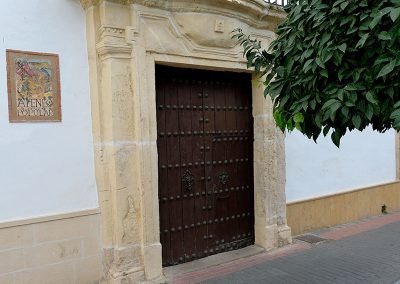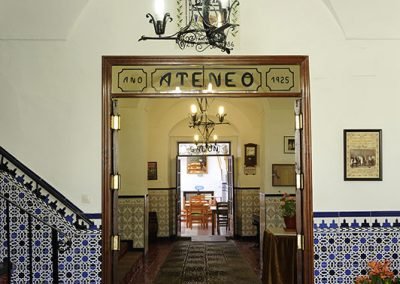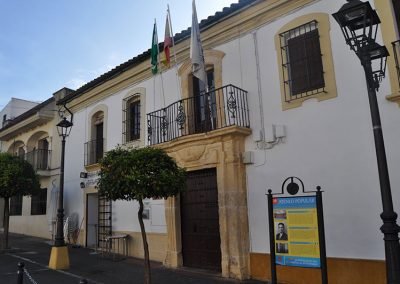Cultural Heritage: Casa Señorial de los Natera (Currently Ateneo Popular)
The Casa Señorial de los Natera, now home to the Ateneo Popular, is a quintessential example of an 18th-century noble residence. Built in 1777 for Don Luis Natera, the head of an old noble family in the region, this mansion stands as a testament to the grandeur of the era. Its architecture embodies the refined elegance and artistic influences that characterized the period, offering a glimpse into the past and showcasing the cultural heritage of the area.
The mansion is organized around a central courtyard, which is a hallmark of the period’s design, allowing for a harmonious flow of space and light throughout the building. The façade of the house is particularly striking, boasting Baroque elements that demonstrate the craftsmanship and artistic sensibilities of the time. The main entrance is framed by a lintel arch, flanked by pilasters that rise above, adding a sense of verticality and strength to the structure. These pilasters are intricately designed with relief patterns, creating a sense of movement and depth on the surface. At the top of the arch, a convex cartouche, a decorative element often used in Baroque architecture, draws the eye and serves as a decorative focal point. The lines of the cartouche are echoed by the balcony above, creating a harmonious visual flow that unites the various elements of the façade.
Inside, the Casa Señorial de los Natera retains much of its original charm, with spacious rooms adorned with classical details that reflect the refined tastes of its original owners. The central patio provides a calm and serene space, ideal for reflection and conversation, typical of the noble residences of the time. The mansion’s design demonstrates a deep connection to the cultural and artistic traditions of the 18th century, offering visitors a sense of the opulence and grace that defined the local aristocracy.
Today, the building houses the Ateneo Popular, an institution that was founded in 1925 with the mission of promoting science, culture, and education for all members of the community, regardless of social class. The Ateneo Popular has played a crucial role in the cultural development of the town, serving as a gathering place for intellectuals, artists, and citizens alike. Over the years, the institution has become a cornerstone of local culture, fostering a sense of community and intellectual exchange.
The Ateneo Popular has left a lasting impact on the town, with many distinguished local figures contributing to its legacy. One of the most notable individuals associated with the institution is the poet Ricardo Molina, who was named an honorary member of the Ateneo in 1952. Molina’s association with the Ateneo highlights the importance of the institution in the cultural and literary circles of the time, as it provided a platform for the exchange of ideas and the promotion of creative works.
Manuel Alba, another influential figure from the town, also left his mark on the Ateneo. As a prominent local intellectual, Alba’s contributions to the cultural and scientific life of the community were significant, and his involvement with the Ateneo helped to solidify the institution’s role in fostering intellectual growth and cultural awareness. The Ateneo Popular remains a testament to their work and dedication to enriching the cultural life of the region.
The Casa Señorial de los Natera is more than just a historical building; it is a living piece of the town’s heritage, continuing to serve as a hub for cultural and intellectual activity. Its architecture and history offer a glimpse into the past, while the Ateneo Popular carries on the legacy of its founders by promoting culture, education, and civic engagement. The mansion’s blend of historical significance and contemporary purpose makes it a unique and valuable landmark in the town, offering visitors a chance to connect with both the past and the present.
In conclusion, the Casa Señorial de los Natera, now home to the Ateneo Popular, is a symbol of the rich cultural heritage of the town. Its Baroque architecture, its connection to the noble family of the Nateras, and its role in the development of local culture through the Ateneo Popular all contribute to its significance as a cultural treasure. Visitors to this historic site can appreciate not only the beauty of its architecture but also the enduring impact it has had on the cultural fabric of the community























